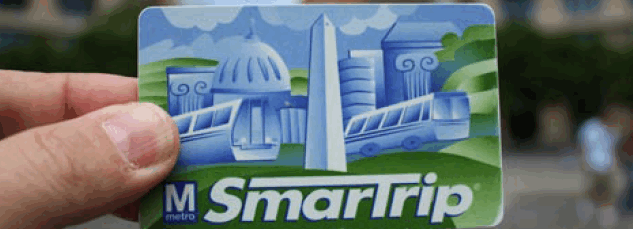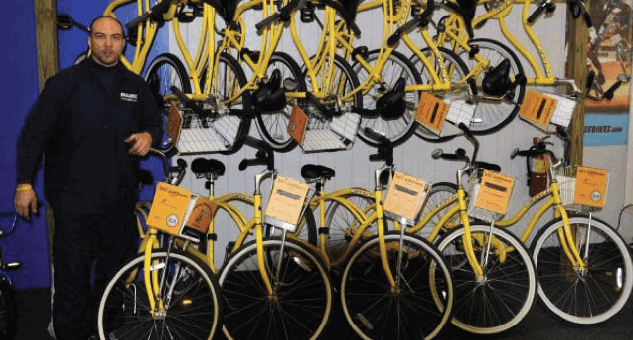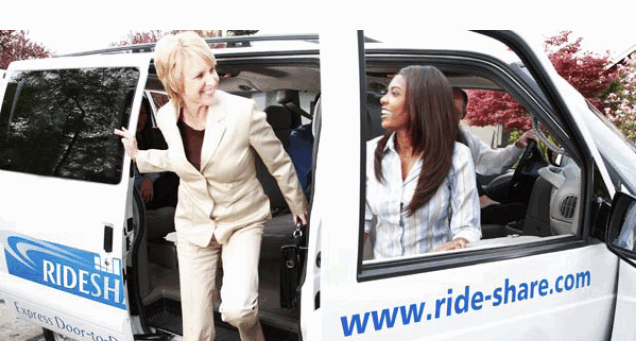TRANSPORTATION FOR AMERICA, INTELLIGENT TRANSPORTATION SOCIETY OF AMERICA, ASSOCIATION OF COMMUTER TRANSPORTATION, SUSTAINABILITY MOBILITY & ACCESSIBILITY RESEARCH & TRANSFORMATION
Strategies for Maximizing Technology to Minimize Congestion, Reduce Emissions and Increase Efficiency
Executive summary
Improving transportation efficiency through operational innovation is critical as our population grows and ages, budgets tighten and consumer preferences shift. Now, as Congress prepares to review and reauthorize the nation’s transportation program, an array of innovations that were either overlooked or did not exist at the time of previous authorizations can be incentivized.
Case studies here and abroad show how savvy investments can help the U.S. save money while reclaiming world leadership in developing a transportation network for the 21st century. Smart technologies are available to improve travel efficiency, provide accurate real-time information, make pricing and payments more convenient, and customize travel to meet individual needs.
But these innovations require systematic deployment throughout the transportation system and across the country in order to be most effective. As Congress moves forward with a comprehensive transportation bill, this report shows how establishing national targets for reducing congestion and emissions through programmatic changes and funding incentives can accelerate the development and implementation of innovative, new information systems and technology solutions.
Introduction
Astounding advances in technology — from smart phones, to smart networks, to high speed broadband — are transforming lives in ways unthinkable just a few years ago. Digital communication allows movement around the virtual world in an instant.
But current technology has yet to reach its potential to move us around the physical world. Rather than unleashing powerful capabilities to improve the transportation system as a whole, technology is applied today primarily to make individual vehicles more “high tech.”
This paper will explore strategies for using existing and emerging technologies to minimize congestion, reduce emissions, cut spending, create jobs and improve efficiency, all while expanding convenience, safety and mobility.
Just as the Internet, smart phones and social media changed they way we acquire news, listen to music or connect with friends and family, these same innovations have implications for how we move around. While high-tech gadgets can be a problem when they distract motorists from driving, they open up a whole new world for people using other modes. From the comfort of a bus or train, for example, one can surf the net, text friends or send e-mail to the office, all while traveling from point A to point B. But what if we could manage traffic to help drivers avoid congestion before they get stuck in it? What if you always knew when the next bus was going to arrive, the closest parking space or which train car had a seat available for you?
We are at a point where advancements in physical and digital infrastructure can work hand in hand, positioning us to develop intelligent and forward-thinking solutions for our transportation systems as a whole.
Yet we have only just begun to unleash these technological capabilities on the U.S. economy. A great deal more is possible.
Innovation leaders such as Japan, Sweden, South Korea and increasingly China are leaping ahead of the United States with technologically advanced transportation networks that reduce emissions and cut travel times. However, the U.S. can catch up and reclaim our role as an innovation leader if we make the kind of national commitment we have made in the past to build cutting edge infrastructure, from rural electrification to the Interstate Highway system.
As Congress prepares to review and reauthorize the nation’s transportation program, this paper makes the case for emphasizing technology and innovation to solve our nation’s most critical transportation problems.
The U.S. transportation system is the engine of our economic competitiveness, providing access to schools and jobs, delivering just-intime products, maintaining security, encouraging healthy active lifestyles, allowing first responders to tackle emergencies, promoting tourism, facilitating business, and ensuring smoothly operating thoroughfares so people can get where they need to go.
As our population grows and ages, budgets shrink, and consumer preferences shift, we need a new vision for a faster and smarter 21st century America to make better use of our resources. The innovations presented here show how to get the most for our investment as we adapt to new circumstances and opportunities.
Download full report (PDF): Smart Mobility for a 21st Century America
About Transportation for America
www.t4america.org
“Transportation for America has formed a broad coalition of housing, business, environmental, public health, transportation, equitable development, and other organizations. We’re all seeking to align our national, state, and local transportation policies with an array of issues like economic opportunity, climate change, energy security, health, housing and community development.”
About Intelligent Transportation Society of America (ITS America)
www.itsa.org
The Intelligent Transportation Society of America (ITS America) was established in 1991 as a not-for-profit organization to foster the use of advanced technologies in surface transportation systems. We are the leading advocate for technologies that improve the safety, security and efficiency of the nation’s surface transportation system.
About Association of Commuter Transportation (ACT)
www.actweb.org
“ACT supports individual mobility management professionals and organizational members in their efforts to reduce traffic congestion, conserve energy and improve air quality.”
About Sustainability Mobility & Accessibility Research & Transformation (SMART)
www.um-smart.org
“SMART undertakes and catalyzes research, demonstration projects (living labs), education, and global learning exchange on a range of issues related to the sustainable future of transportation in an urbanizing world.”
Tags: Ann Arbor, ASSOCIATION OF COMMUTER TRANSPORTATION, Bicycles, Go Blue, Intelligent Transportation Society of America, ITS America, Michigan, Rideshare, Smart, SUSTAINABILITY MOBILITY & ACCESSIBILITY RESEARCH & TRANSFORMATION, T4America, Transportation for America, U of M, University of Michigan, Wolverines









 RSS Feed
RSS Feed